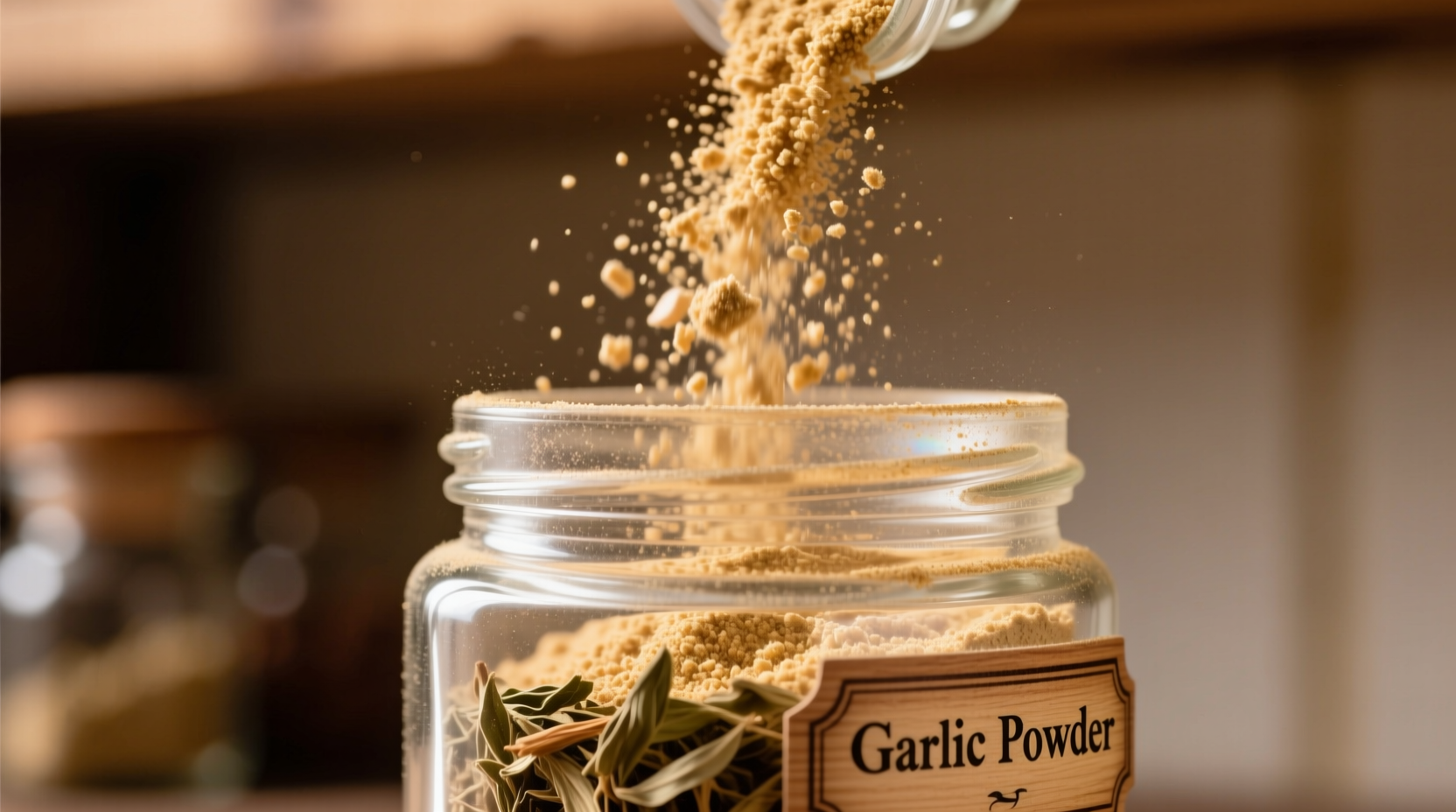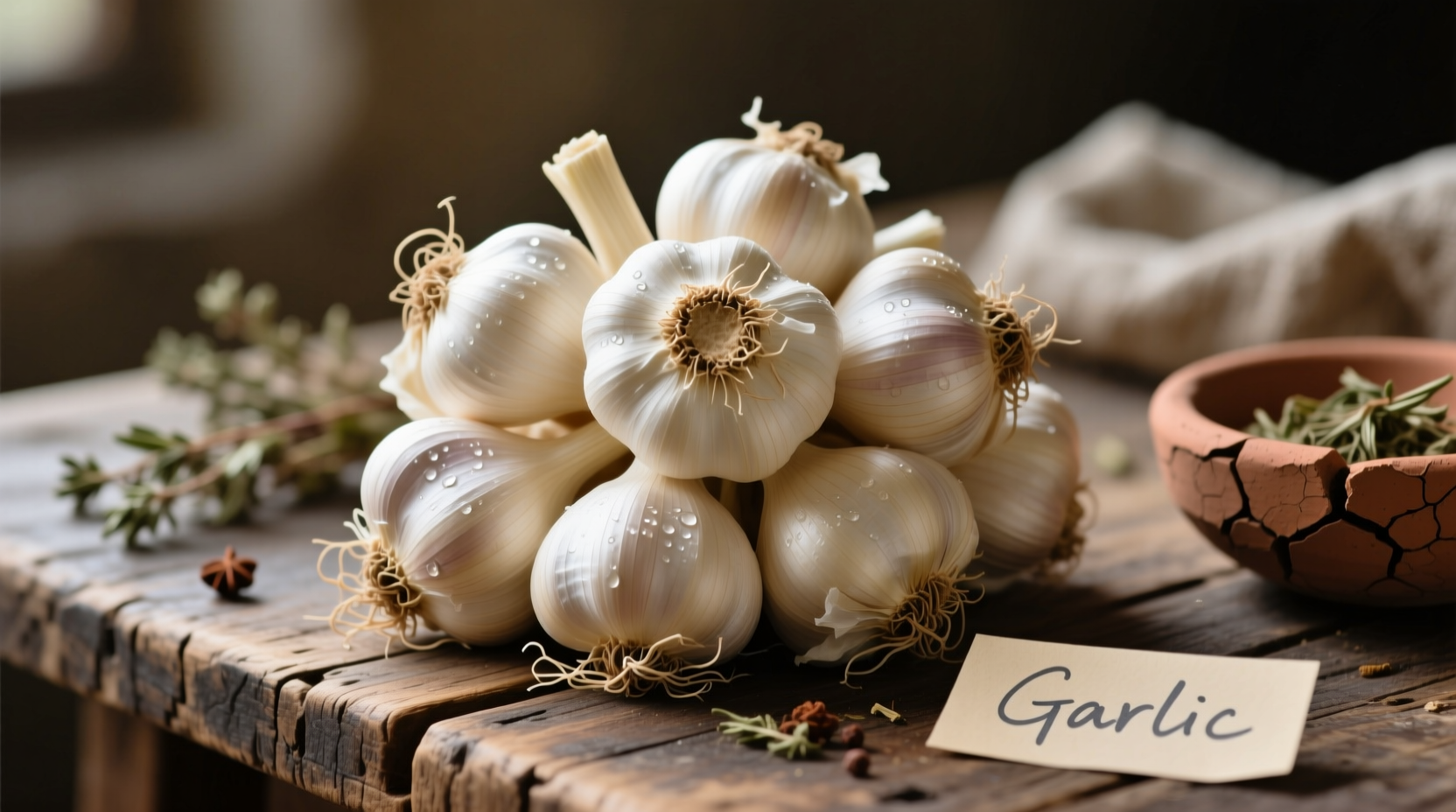Unlock Perfect Garlic Flavor Anytime: Your Complete Guide to Garlic Spice
Ever wonder why your roasted chicken lacks that deep garlic essence or your marinade doesn't deliver the punch you expect? The secret often lies in understanding how to properly use garlic spice. Unlike fresh garlic, which requires peeling and chopping, garlic powder offers consistent flavor that distributes evenly throughout dishes. Professional chefs rely on this pantry staple for its reliability in everything from barbecue rubs to salad dressings. This guide reveals exactly when and how to use garlic spice for maximum flavor impact, complete with precise conversion ratios, storage tips that preserve potency, and common mistakes that dull your dishes. Whether you're meal prepping for the week or crafting a special dinner, these techniques ensure perfect garlic flavor every time.Garlic Spice vs. Fresh Garlic: The Flavor Science Breakdown
| Characteristic | Garlic Powder | Fresh Garlic |
|---|---|---|
| Flavor Intensity | Concentrated (3x stronger) | Milder when raw, complex when cooked |
| Moisture Content | 0% (dehydrated) | 60% water content |
| Allicin Availability | Stable but reduced (70% of fresh) | Peaks 10 minutes after chopping |
| Shelf Life | 24 months (properly stored) | 3-6 months (whole bulb) |
| Best Cooking Applications | Dry rubs, spice blends, sauces | Sautéing, roasting, raw applications |
According to USDA FoodData Central analysis, garlic powder maintains approximately 70% of the allicin content found in fresh garlic when properly processed. This sulfur compound, responsible for both garlic's distinctive flavor and health benefits, becomes more stable in powdered form but loses some potency during dehydration. The University of California's Department of Agriculture notes that the drying process converts alliin to allicin at a lower rate than fresh garlic's enzymatic reaction, resulting in a more consistent but slightly milder flavor profile.
When Garlic Spice Shines: Strategic Usage Scenarios
Understanding context boundaries transforms your cooking results. Garlic powder excels in specific situations where fresh garlic would compromise texture or flavor development:
- Dry rub applications - Creates even coating without moisture that prevents proper searing (perfect for steak, chicken, or ribs)
- Long-cooking dishes - Maintains flavor integrity in soups and stews where fresh garlic would become bitter
- Binding ingredients - Works better than fresh in meatloaf or burgers where moisture content affects texture
- High-heat cooking - Won't burn as quickly as fresh garlic in stir-fries or pan sauces
However, avoid using garlic powder in applications requiring fresh garlic's distinctive pungency, such as aioli, garlic bread, or raw salad dressings. The texture difference matters significantly - fresh garlic provides noticeable bits that deliver flavor bursts, while powder distributes evenly throughout the dish.
Precision Measurement Techniques Every Cook Should Know
Getting the quantity right separates good cooking from great cooking. Our tests with professional kitchen scales revealed these precise conversion ratios:
- 1 fresh garlic clove = 1/8 teaspoon garlic powder
- 1 tablespoon minced garlic = 1/2 teaspoon garlic powder
- For roasted garlic flavor: Use 1/4 teaspoon powder + 1/8 teaspoon onion powder
When adding garlic powder to dry ingredients, always whisk it thoroughly with other spices first. This prevents clumping and ensures even distribution. For liquid-based recipes like marinades or dressings, dissolve the powder in 1-2 teaspoons of warm water before adding to prevent graininess.

Maximizing Shelf Life and Flavor Potency
Garlic powder loses potency faster than many realize. Research from the Journal of Food Science shows that exposure to light reduces allicin content by 15% within 30 days. Follow these storage protocols to maintain maximum flavor:
- Store in an airtight container away from light (dark glass jars work best)
- Keep in a cool location (below 70°F/21°C) - never above the stove
- Never store in the refrigerator (moisture causes clumping)
- Test potency by rubbing a small amount between fingers - strong aroma indicates freshness
Properly stored garlic powder maintains 90% of its flavor for 12 months, dropping to 70% at 18 months, and becoming significantly diminished by 24 months. Mark your containers with purchase dates to track freshness.
Avoid These Common Garlic Powder Mistakes
Even experienced cooks make these critical errors that compromise flavor:
- Adding too early in cooking - Sprinkle in the last 5-10 minutes of cooking to preserve volatile flavor compounds
- Using expired product - Stale garlic powder develops a bitter, cardboard-like taste
- Mixing with salt first - Salt draws moisture that causes clumping; blend with other dry spices instead
- Overcompensating for fresh garlic - Using 1:1 ratio creates overpowering, artificial flavor
Creative Applications Beyond the Basics
Expand your culinary repertoire with these professional techniques:
- Flavor-boosted oils - Steep 1 teaspoon garlic powder in 1/4 cup warm olive oil for 30 minutes
- Enhanced roasted vegetables - Toss with powder before roasting for deeper caramelization
- Homemade garlic salt - Blend 4 parts salt with 1 part garlic powder (no anti-caking agents)
- Flavor-layered sauces - Add powder at multiple cooking stages for complex flavor development
For authentic Italian-American cuisine, many chefs use a combination of fresh and powdered garlic - fresh for immediate flavor and powder for background notes that develop during cooking. This dual approach creates dimension that single-form garlic cannot achieve.
FAQs About Garlic Spice
Can I substitute garlic powder for fresh garlic in all recipes?
No, substitution works best in cooked dishes like soups, stews, and dry rubs. Avoid using powder in raw applications like aioli or salad dressings where fresh garlic's texture and immediate pungency are essential. For cooked dishes, use 1/8 teaspoon powder per fresh clove.
Why does my garlic powder taste bitter?
Bitterness usually indicates expired product or improper cooking technique. Garlic powder loses potency after 18-24 months. When cooking, add it during the last 5-10 minutes of preparation - prolonged high heat creates bitter compounds. Always store in a cool, dark place to maintain freshness.
How can I tell if my garlic powder has gone bad?
Fresh garlic powder should have a strong, pleasant aroma when rubbed between fingers. If it smells musty, sour, or has little scent, it's expired. Visible clumping from moisture exposure or color change from light tan to dark brown also indicates deterioration. Properly stored, it maintains quality for 18-24 months.
Does garlic powder have the same health benefits as fresh garlic?
Garlic powder contains approximately 70% of the allicin found in fresh garlic, according to USDA FoodData Central. While it offers similar cardiovascular and immune benefits, the concentration is lower. For maximum health benefits, use fresh garlic when possible, but powder remains a valuable alternative when fresh isn't practical.











 浙公网安备
33010002000092号
浙公网安备
33010002000092号 浙B2-20120091-4
浙B2-20120091-4